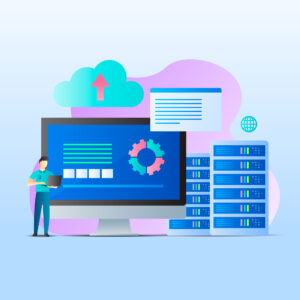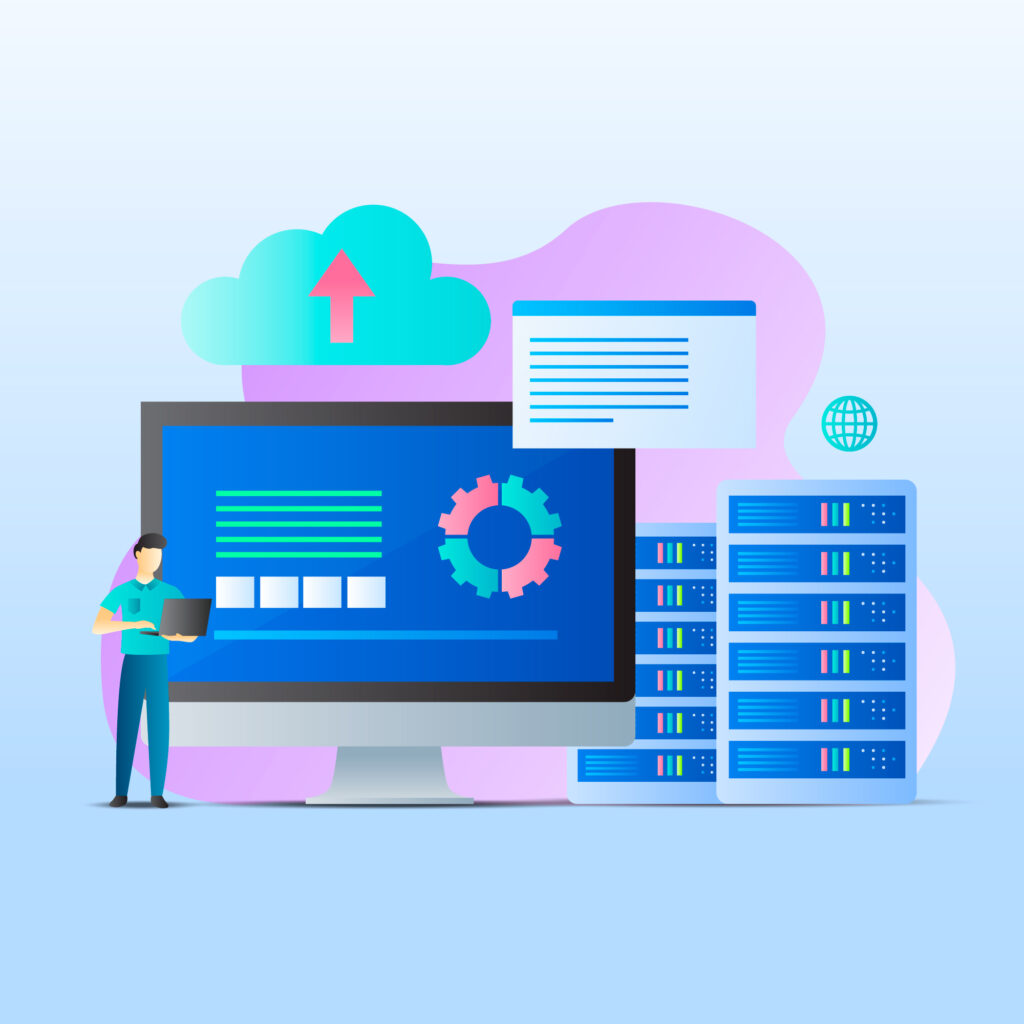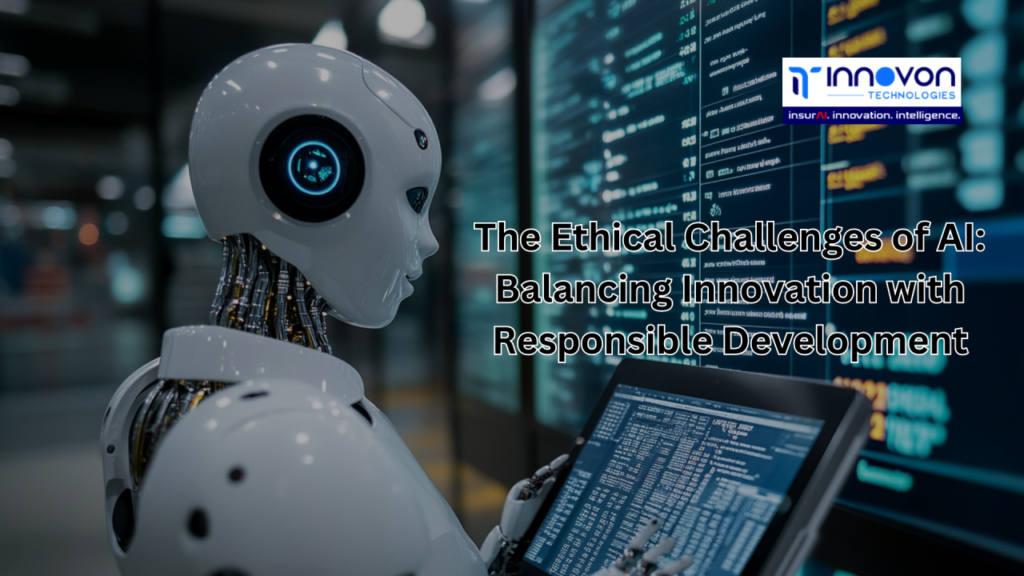Importance of Mainframe Modernization
- Efficiency and Cost Savings: Modern systems can often perform the same tasks more efficiently than mainframes, leading to significant cost savings in the long run.
- Integration with New Technologies: Modernizing your mainframe can make it easier to integrate with new technologies, such as cloud computing and AI.
- Talent Acquisition: As the IT industry evolves, it’s becoming harder to find professionals skilled in mainframe technologies. Modern systems are more familiar to the current generation of developers.
Challenges
Mainframe modernization is a complex process and organizations often face several challenges during this transition. Here are some common challenges:
- Technology Misconceptions: There’s a common misconception that technology alone can solve the problem. However, successful modernization requires a combination of the right technology, strategy, and skilled personnel.
- Database Administration and DevOps: Integrating database administration into modern DevOps practices can be challenging. This is due to the differences in workflows and tooling between mainframe systems and modern DevOps environments.
- Shadow IT Projects: Identifying and reducing shadow IT projects is another challenge. Shadow IT refers to IT projects that are managed outside of, and without the knowledge of, the IT department.
- Tool Standardization: Improving tool standardization for effective integration into DevOps deployment patterns can be difficult. Mainframes often use unique, specialized tools that may not integrate well with standard DevOps tools.
- Lack of Integration Capabilities: Mainframes may lack integration and web capabilities for different business applications. This can make it difficult to connect mainframe applications with modern web-based applications.
- Flexibility and Expertise: There’s a lack of flexibility and a shrinking labor pool with legacy expertise. As the IT industry evolves, it’s becoming harder to find professionals skilled in mainframe technologies.
- High Total Cost of Ownership: Mainframes have a high total cost of ownership. This includes the costs of specialized hardware, software, and personnel required to maintain and update legacy mainframe systems.
- Technical Debt: High technical debt is another challenge. Technical debt refers to the implied cost of additional rework caused by choosing an easy solution now instead of using a better approach that would take longer.
- Resource Deficit: The lack of required resources and skills is a top challenge in mainframe modernization.
Addressing these challenges requires a strategic approach tailored to the specific needs and goals of the organization.
A Practical Approach to Mainframe Modernization
Mainframe modernization is not a one-size-fits-all process. It requires a careful and strategic approach. Here’s a practical approach:
- Assessment: Understand your existing mainframe environment, including the applications that run on it and their interdependencies.
- Assess Current Infrastructure: Begin by conducting a comprehensive assessment of your existing mainframe environment. Understand the applications, data, and dependencies. Identify critical business processes that need modernization.
- Define Clear Objectives: Establish specific goals for modernization. Determine whether you want to migrate to the cloud, refactor existing applications, adopt microservices architecture, or implement a hybrid solution. Clear objectives guide the modernization process.

- Embrace Cloud Technology: Cloud platforms offer scalability, flexibility, and cost-effectiveness. Consider migrating non-sensitive workloads to the cloud while retaining sensitive data on-premises. Cloud solutions provide the agility needed for modern business operations.
- Adopt Microservices Architecture: Breaking down monolithic applications into microservices allows for easier maintenance, scalability, and faster development cycles. Microservices promote modularity, enabling organizations to update individual components without disrupting the entire system.
- Invest in Training and Skill Development: Equip your IT workforce with the skills needed to work with modern technologies. Training programs and certifications ensure that your team can effectively manage and optimize the new infrastructure.
- Identify the Right Modernization Strategy: This could be
- re-hosting – moving to a new platform without changing code,
- re-platforming – moving to a new platform with some code changes,
- re-factoring – restructuring existing code,
- re-architecting – altering the application’s architecture, or
- re-building – rewriting the application from scratch
- Choose the Right Tools and Platforms: Choose modern platforms that best suit your needs. This could be cloud platforms, hybrid environments, or on-premises servers and SOA, DevOps, and Micro Services etc.,
- Execution: Implement the modernization strategy using agile methodologies. This involves building the new environment, migrating applications, testing, and going live.
- Continuous Improvement: Once you’ve modernized your mainframe, it’s important to continuously monitor performance and make improvements as necessary.
Assessment
Assessing your existing mainframe environment is a crucial first step in the modernization process. Here’s a practical approach:
- Portfolio Assessment: If your organization has decided to migrate all the workloads from the mainframe but does not have full visibility of which applications are running and their target disposition, then a Portfolio Assessment will be needed. This assessment consists of a series of workshops, and interviews with application owners, business users, and technical and business subject-matter experts (SMEs) to gather application information.
- Inventory Assessment: This involves developing a complete understanding of the application, infrastructure, and operational components of a mainframe environment2. It exposes mainframe artifacts that organizations did not know they had, relationships they did not realize existed, and assets that are no longer in use.
- Automated Assessment: This solution enables organizations to discover artifacts they did not know they had, relationships they did not realize existed, and assets that are no longer in use in their mainframe environments.
- Use Monitoring Tools: Tools like Azure Monitor, Application Insights, and Azure logs can help you monitor over-performing batch runs and reduce bottlenecks.
Remember, many companies engage a system integrator to do this work, but at minimum, you should be aware of the activities they will perform.
Benefits
Mainframe modernization offers several key benefits:
- Cost Reduction: Modernizing mainframes can significantly reduce costs. Legacy mainframe systems can be expensive to maintain and update due to the specialized hardware, software, and personnel required. Modernization can transition businesses to more cost-effective platforms and technologies.
- Increased Efficiency: Modernized systems can increase efficiency. Legacy systems can be slow and difficult to navigate, making it challenging for employees to complete tasks efficiently1. Modernizing these systems allows businesses to streamline their processes, leading to increased productivity and faster turnaround times.
- Business Agility: Modernization can enhance business agility. It allows businesses to quickly adapt to changes in the market and new technologies.
- Rich End-User Experience: Modernized systems can provide a rich end-user experience3. They are typically more user-friendly than legacy systems.
- Digitization Opportunities: Modernization opens up opportunities for digitization, such as advanced analytics and reporting.
- Lower Maintenance Costs: Modernization can lower annual application maintenance costs by an average of 40%.
- Cloud-Native Adaptability: Modernization affords the opportunity to become cloud-native, meaning businesses can adapt more quickly in the future to changes in the market and new tech.
These benefits make mainframe modernization a strategic move for businesses looking to stay competitive in today’s rapidly evolving technological landscape.
Conclusion
Mainframe modernization is a critical step for businesses looking to stay competitive in today’s rapidly evolving technological landscape. With a strategic approach, businesses can successfully transition from legacy mainframes to modern systems that offer greater efficiency, integration capabilities, and cost savings.
Innovon Technologies
Powering Tomorrow, Modernizing Today!




